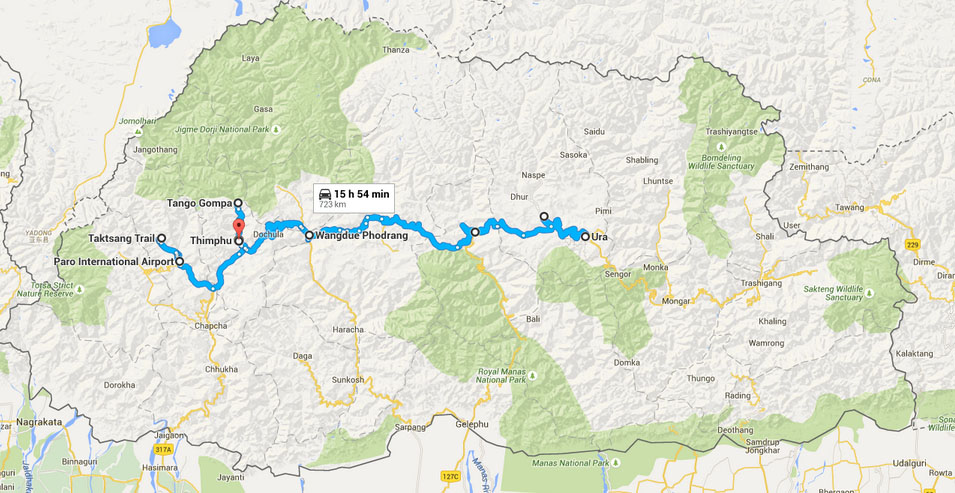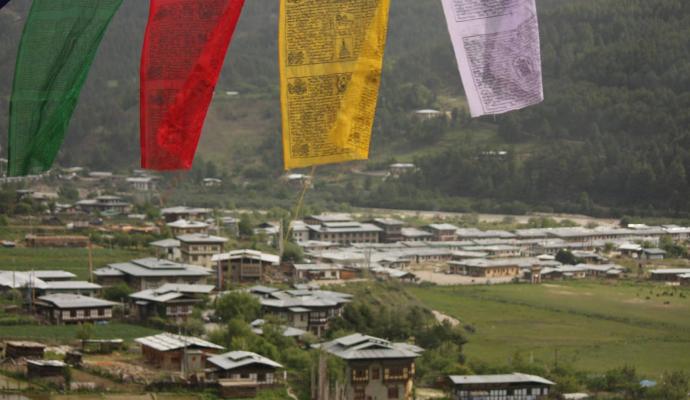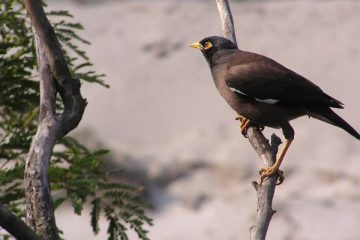The Ura Festival and Bumthang Cultural Trek offer a captivating blend of cultural immersion and trekking adventure in the pristine landscapes of Bhutan. The journey begins with the Ura Festival in the charming village of Ura in the Bumthang region, where vibrant masked dances, religious ceremonies, and traditional festivities unfold, providing a unique insight into Bhutanese culture.
Following the festival, the trek takes participants through the scenic Bumthang Valley, passing through traditional villages, terraced fields, and ancient monasteries. Trekkers witness the breathtaking beauty of the Himalayan landscapes, including panoramic mountain views and serene alpine meadows. The trek culminates in a visit to the sacred Membartsho Lake and the revered Jakar Dzong.
The combination of the Ura Festival and Bumthang Cultural Trek offers a holistic experience, allowing participants to immerse themselves in Bhutanese traditions, witness the natural splendor of the region, and undertake a memorable trekking adventure in one of the most culturally rich and scenically stunning areas of Bhutan.
Tour Highlights
- A timeless unique culture and tradition
- Important and religious landmarks in Bhutan
- Religion and its diverse tribes of people
- Landscapes and biodiversity
- Beautiful and reveling day outing
Tour Outline
- Day 01: Arrive Paro
- Day 02: Paro – sightseeing
- Day 03: Paro – Thimphu
- Day 04: Thimphu – sightseeing
- Day 05: Thimphu – Wangdue
- Day 06: Wangdue – Trongsa
- Day 07: Trongsa – Bumthang
- Day 08: Bumthang – Ura
- Day 09: Ura Festival
- Day 10: Shingkhar – Ura
- Day 11: Bumthang trek begins
- Day 12: Phephela Pass to Tang valley
- Day 13: Ugyenchholing to Jakar
- Day 14: Bumthang -Wangdue
- Day 15: Wangdue – Thimphu
- Day 16: Thimphu – Paro
- Day 17: Departure
| ARRIVAL / DEPARTURE | Paro, Bhutan | |||||||
| DURATION | 16 Nights / 17 Days | |||||||
| DEPARTURE TIME | 2 Hours before Flight time | |||||||
| WEAR | Comfortable athletic clothing, hiking boots, hat, jacket and sunscreen. | |||||||
| INCLUDED |
|
|||||||
| NOT INCLUDED |
|
Arrive Paro
Arrive Paro Airport. You will be welcomed to Bhutan by Rainbow Tours & Treks representatives. Transfer to hotel. Lunch in hotel and over lunch review the itinerary for the following days and exchange ideas with guide.
- First excursion will be to the National Museum, once the watchtower for the Rimpung Dzong, located high on a promontory overlooking the Paro valley. This first outing is meant to familiarize you with the cultural and natural history of this kingdom, and a visit to Ta Dzong; the National Museum is the very best way to quickly learn the culture since it houses everything that is Bhutanese, in a very different museum style that will delight you. First constructed in 1645, Ta Dzong was converted to the National Museum in 1968. While photography within the museum is not allowed, there are numerous photo ops of the exterior and the valley below.
- After the visit to Museum, walk along the Paro Chu (River) to take pictures of Rinpung Dzong and the museum above. Here you can see the covered foot bridge over the river, the huge wooden gate leading to the bridge, and the interior of the dzong. Built in 1645, this massive building now houses the District Administration Office and the Monk Body. A flagstone path leads to the dzong, rising gradually from the bridge that is abutted by two guard houses. The central tower, called the “Utse” of the Dzong, is clad in superb woodwork and is considered to be the nation’s most beautiful tower.
Dinner and overnight: Hotel
Paro - sightseeing
After breakfast drive 10 km north of Paro to hike up a forested path to Taktsang Monastery, also known as Tiger’s Nest.
- Bhutan’s most scenic icon or the most important landmark, Taktshang the Tiger’s nest clings to the side of a steep cliff 300 meters above the Paro valley. The place was first visited by Guru Rimpoche, founder of the tantric form of Buddhism in Himalayan countries, in the 8th century. It was said that he meditated there for about three months. The original temple was built in the 17th century, but tragically, it was consumed by fire in 1998. Like a phoenix, the temple was rebuilt to its fullest glory in 2003. Takshang is considered to be the 10th-holiest site in the Buddhist world. You can visit three different temples inside the main Takshang complex. Riding Ponies provided upon request.
- Lunch at Taktshang Cafeteria.
- After you descend from Taktshang, visit Kychu Lhakhang (temple). This is one of the oldest and most sacred shrines of Bhutan. The inner temple was built by a Buddhist Tibetan King, Srongtsen Goempo in the 7th century.
- In the evening visit a farm house for local hospitality and interact with local farmers.
Overnight: Hotel
Paro - Thimphu
Note: the day 03 programme is subject to arrival in Thimphu on a week-end.
Drive to Thimphu. After check in at Hotel visit the weekend open-air market where farmers and merchants meet to sell their crops and wares. The market is alive with photo opportunities: red hot-peppers weighed on centuries-old scales; a weathered old man spinning a prayer wheel while he hawks strings of rock-hard yak cheese; a mother feeding watermelon to a baby strapped to her back.
If day 03 does not fall on a weekend, visit:
- Memorial Chorten: Memorial Chorten. This stupa was built in 1974 to honor the 3rd King of Bhutan, Jigme Dorji Wangchuck. This religious structure is circumambulated only in a clockwise direction (reciting prayers and whirling the large red prayer wheels).
- Textile Musuem: Textile Museum – What would be the best dress to attend the festivals in Bhutan? The answer would be “colorful, hand-woven, and made of pure silk.” It takes almost a year to weave one dress, but textiles has become the largest industry in the country. The visit to the textile museum is an introduction to the Bhutanese national attire and the workforce responsible for these items of utility and beauty.
- Late afternoon visit the National Takin Reserve, where a herd of Bhutan’s national animals reside. Legend has it that the takin is a cross between a goat and a buffalo, but biologists agree that its nearest relative is the arctic musk ox.
Dinner and overnight: Hotel
Thimphu - sightseeing
- After breakfast walk from your hotel to the Zangtoepelri Temple (Paradise Temple) in the center of Thimphu, where pilgrims come on foot over high mountain passes to worship and seek blessings from Buddhist monks. Local residents flock here in the morning to chant their daily prayers as they walk clockwise around the Temple, spinning prayer wheels as they pass fragrant columns of smoke from smoldering juniper branches that carry a stream of prayers to the mountain deities.
- Afterwards drive 30 minutes to Begana and hike to Tango Monastery. Be prepared for a vigorous 45-minute climb into the clouds. From the top of Tango (means “horse-head”, for the horse-head-like rock formation on the side of the mountain) you can see distant monasteries through a forest of colorful prayer flags and the interior courtyard of the monastery. You will also have opportunity to meet monks and discuss Buddhism with them.
- After your descent you can enjoy a boxed lunch on the banks of the Thimchuu (Thimhu River) next to the picturesque Cheri Zam (Cheri Bridge.) This covered wooden footbridge is one of only a handful of traditional suspension bridges left in the Himalayas.
- In the afternoon, return to Thimphu and visit the incense-making factory, paper factory for handmade paper and Trashichhodzong, the impressive secretariat building which also houses the throne room and the central monastic body,
- Evening: dinner at local restaurant.
Overnight at Hotel
Thimphu - Wangdue
- After breakfast begin your journey to the east, en route stopping at 10,500 ft. Dochula Pass for tea and biscuits and enjoy your first view of the eastern Himalayan mountains. Spend sometime walking through hundreds of colourful prayer flags surrounded by rhododendron forest and other high altitude flowers and plants.
- Drive on to Wangduephodrang–shortened to Wangdue by the locals–where the most prominent feature is the Wangdue Dzong, visible from your hotel room window as it sits on a mountain spur commanding an archer’s view of two rivers. Check in at Dragon’s Nest Resort and have lunch.
- After lunch, visit Punakha Dzong (16 km from Wangdue) Built in 1637 between the confluence of the Po Chu (male river) and Mo Chu (female river,) this fortress is the winter residence of Bhutan’s spiritual leader, the Je Khenpo or Head Abbot, and the central Monk Body–350 monks in total.
- On the way back from Punakha, hike through farm houses to Chhi-Med (means “no dogs”) Lhakhang in the picturesque Lobesa valley, to visit the temple of one of Bhutan’s foremost saints, the Buddha Drukpa Kunley, affectionately known as the Divine Madman. The phallic paintings on the exterior walls of Bhutanese houses are attributed to the Divine Madman for his skill in warding off evil deities using ribald sexuality and outrageous behavior. You will also have opportunity to see farmers at work in their rice fields.
Dinner and overnight at Hotel.
Wangdue - Trongsa
After breakfast, leave for an 8-hour drive to Trongsa, just 80 miles away as the crow flies, taking the only road that traverses the country. Along the way you will visit farm houses and the winter residence of the second king of Bhutan. You can also photograph the rugged countryside and cultural sights that unfold at every turn of the narrow, twisting highway: Road workers, many of them Nepalese women with shovels and picks in hand, apply their trade to a rockslide or washed-out pavement; basket weavers place bamboo in the road for splintering by passing vehicles; scenic farms-capes in the valley below, with a cow pulling a plough next to a rushing river; school boys dressed in native ghos throw their pencils as darts, practicing to become Olympic archers.
Dinner and overnight at Hotel.
Trongsa - Bumthang
- After breakfast visit Trongsa Dzong and its imposing watchtower. Today, Trongsa Dzong represents Bhutan’s link with its historical monarchy, since it was here that the first hereditary monarch of Bhutan, Ugyen Wangchuk, was enthroned in 1907. This is also the investiture site for future kings ascending the Golden Throne of Bhutan. You can see its remarkable succession of street-like corridors, wide stone stairs and beautiful stone court-yards. Trongsa Dzong represents the very best opportunity to capture the true essence of Bhutanese monastic and parliamentary architecture. Here, 25 lhakhangs (small temples, among which is the oldest lhakhang in Bhutan–the Chorten Lhakhang, built by Yongzin Ngagi Wangchuk in 1543) houses sacred images and religious relics. Intricate wood carvings and beautiful frescos are emblazoned on the walls and pillars.
- After lunch, leave Trongsa and head to Jakar in the central district of Bumthang, a 4-5 hour drive to the east. On the way, you will go over Yotongla Pass and get your first glimpse of the Black Mountains. This drive between Trongsa and Bumthang is the most scenic one as you cross rivers and streams and pass a chorten with water-driven prayer wheels and colorful rock carvings.
Overnight at Bumthang: Hotel in Jakar village.
Bumthang - Ura
Ura Festival Dates: varies yearly.
After breakfast, drive to Ura Valley for the Ura Yakchoe Festival, the cultural highlight of your tour and the only scheduled festival in May. The dates of these festivals and ceremonial processions are matters determined according to celestial indications and other local factors. (On our first tour in 2000, the festival was delayed while organizers settled a dispute over a wayward cow.) Masked dancers dressed in elaborate brocades spin and prance in celebration of the arrival of the statue of one of the eight manifestations of Guru Rimpoche, the patron saint of Bhutan. Children chase jesters and clowns who fling candied popcorn into the crowd. (Children are also seen gambling their money for prizes and candy–you will recognize the “shell game” played on makeshift tables at the row of refreshments and trinket booths.) One of the clowns wears a wooden mask in reference to the Divine Madman, swinging a red cloth penis around his head like a helicopter propeller. Musicians play Tibetan style horns to the beat of dancers who clang heavy cymbals against centuries old cobblestones.
Overnight and dinner at Hotel
Ura Festival
Another full day at the Ura festival, photographing the masked dances and the cultural scenes. You are welcome to enter the temple, roam the adjacent village.
- Late afternoon drive to Shingkar Village for more interaction with villagers in their homes. The “cluster village” of Shingkhar is about 10 kms from Ura by way of a gravel and stone road. There are two temples in Shingkhar–the one opposite the guest house is the older one and is called the “Shingkhar Lhakhang,” with the other temple a short walk down the hill in the heart of the village. The Patron Saint of both temples is Longchen Rabjampa who established Shingkhar village when he discovered a small hut inside a tree. The word “Shing” means wood or tree and “Khar” means small house or hut.
- After dinner, sit around a bonfire and exchange cultural experience with villagers and guide over butter tea and Ara,(native alcoholic drink).
Dinner and overnight: Hotel.
Shingkhar - Ura
After early breakfast leave for Bumthang. Check in at hotel and visit the famous golden roofed Jakar Dzong, known as the Castle of the White Bird. After lunch drive to Chumey Valley to see the Yatha Textile Centre.
Evening: dinner and relax at Hotel.
Bumthang trek begins
After a hearty breakfast drive to embark on a wonderful nature trek to Nganglhakhang. Today you will hike for approximate five hours passing though villages, fields and forests and also crossing over suspension bridges. The trek route follows the Chamkhar River. Here the trout are plentiful! En route you will visit Thangbi Lhakhang before entering “Swan Land” (Ngang Yul). It’s believed that Swans first inhabited this part of the valley. Overnight camp 9,500 ft (2,800M).
Phephela Pass to Tang valley
A gradual climb to Phephela Pass brings you to the highest point of the trek. 12,000 ft (3,353M). The trail to the pass leads through one of the most beautiful forested areas of this region, with mini bamboo pasture, and forests of rhododendrons and Mixed Conifer. The seven-hour trek today will allow for many stops to enjoy nature’s rare beauty. Overnight camp near Ta Houng village in Tang valley. Enjoy a wholesome and delicious Bhutanese meal prepared in camp.
Ugyenchholing to Jakar
Today’s trek will pass Ugyenchholing in the beautiful Tang Valley. You will visit the Ugyenchholing Palace, now housing the Family Museum, a place that will transport you to another world and time. You will view permanent exhibits recreated to capture the ambience of the lifestyle of the Trongsa Penelop (Governor) Tshokey Dorji and his household. Bhutan’s history unfolds. Continuing from Ugyenchholing, you reach the Rimochen Lhakhang, a temple dedicated to Guru Rimpoche, the Patron Saint of Bhutan. This is the last point in the trek route from where you drive on through Pangshing village to Jakar, Bumthang, stopping to visit farm house on the way. Overnight in a guest house to unwind from the trek over a sumptuous dinner and Ara!
Bumthang - Wangdue
After an early breakfast, leave Bumthang to retrace your route, returning to Wangdue. Even though you are on the same road, you will be surprised to find the return drive just as interesting because new and different scenes still unfold on every turn. You may come across a huge troupe of gray langur monkeys in the treetops just off the road. Or maybe a goat herder will have the road blocked for a few minutes with his herd, family and all their belongings on their backs. You will get the feeling you have not been there before because of the numerous changing scenes.
Overnight: Hotel.
Wangdue - Thimphu
After breakfast, you complete the return drive to Thimphu arriving for lunch at Hotel. After lunch, visit Zorig Chuksum, the School for Thirteen Arts and Crafts. This institute was established in 1971 and students from across Bhutan come to learn the traditional arts and crafts.
In the afternoon you are free to roam the streets of Thimphu, Bhutan’s capital and largest city with 45,000 residents. By western standards and compared to other Bhutanese centers of commerce, Thimphu is the only center that rates being called a city. There are no traffic lights here–one was installed and quickly removed after citizens complained–but there are two traffic huts in the center of the main road that provide shade for white-gloved policemen who wave their arms in slow motion, reminiscent of tai chi. Small shops line the street, mostly catering to the locals. There are a few “tourist shops” but you must seek them out. Enjoy the time to yourself.
Dinner and overnight: Hotel.
Thimphu - Paro
After a leisure breakfast drive to Paro via Haa District. Haa was closed to foreign visitors until 2002. It’s a beautiful valley situated south of western Tibet with Chinese border security guards only a few hours walk from Haa. Forty minutes drive from Haa will bring you to Chelila Pass 12,000 feet) This pass provides a panoramic view of the northern and western Himalayan mountain ranges as well as Haa and Paro Valleys. From the Pass it’s another 45 minutes drive to Paro. Check in at hotel.
Dinner and overnight: Hotel.
Departure
Transfer airport for departure

SEND YOUR INQUIRY
* Our representative will get in touch by email within 48 hours.






Tour Reviews
There are no reviews yet.
Leave a Review